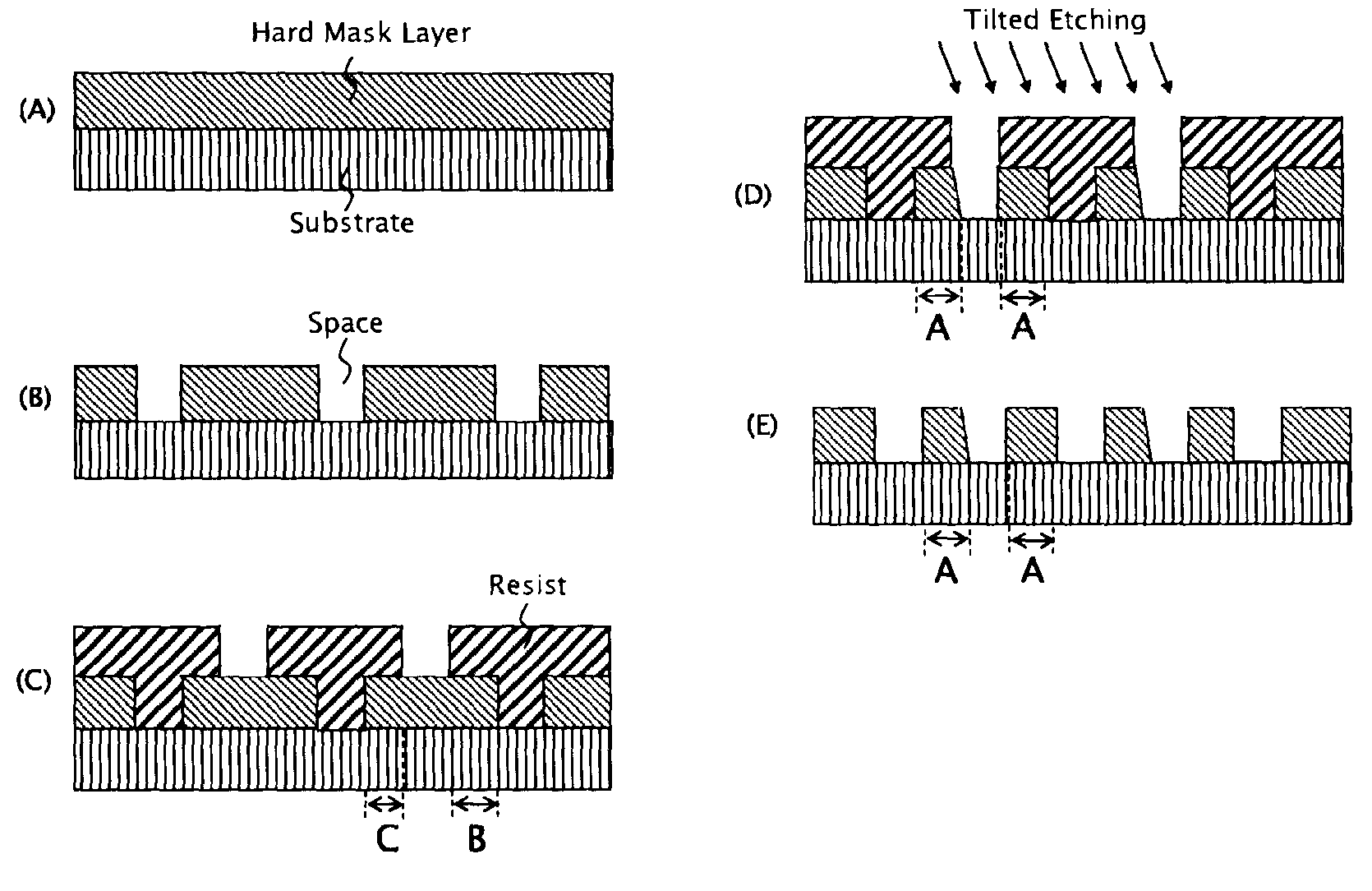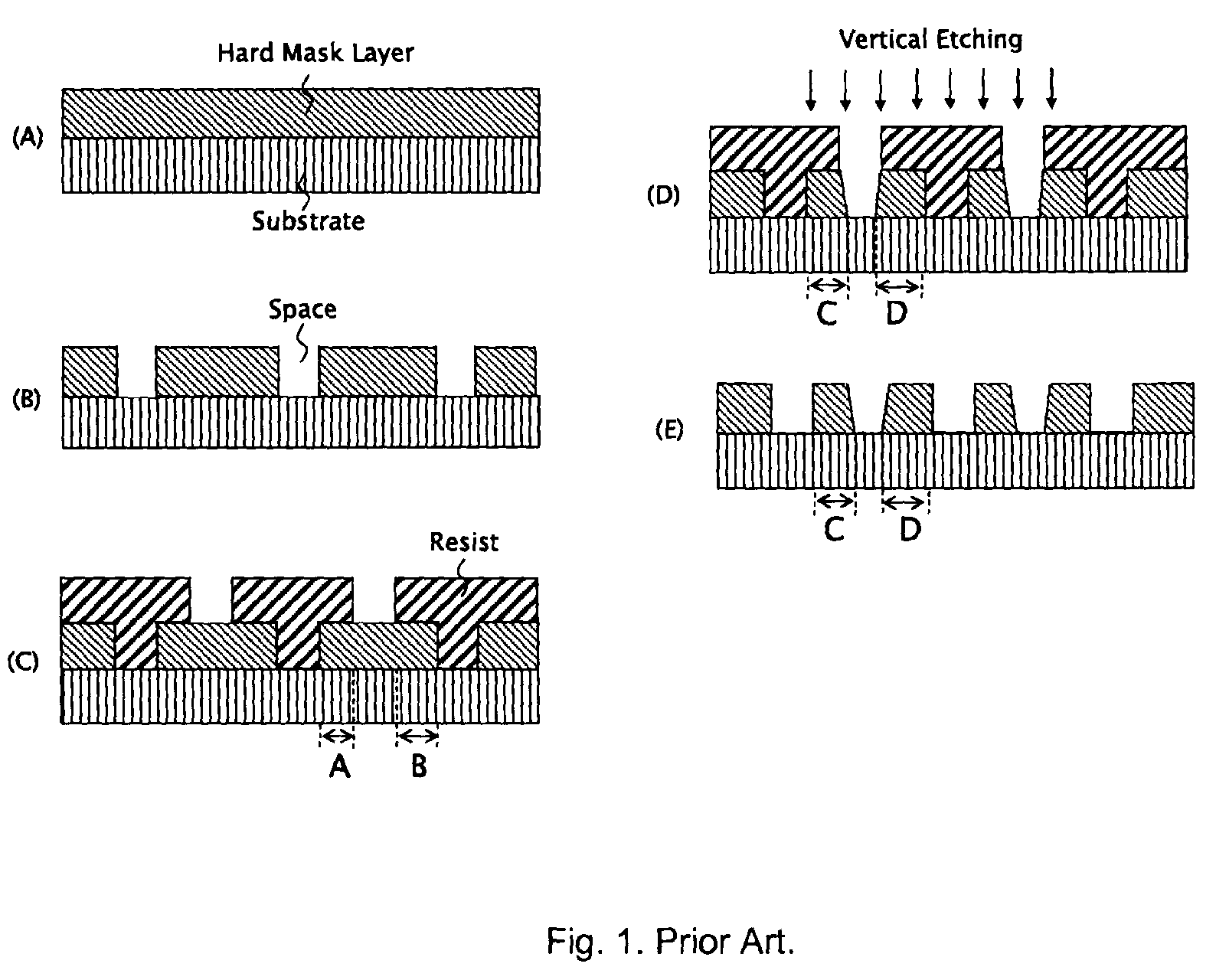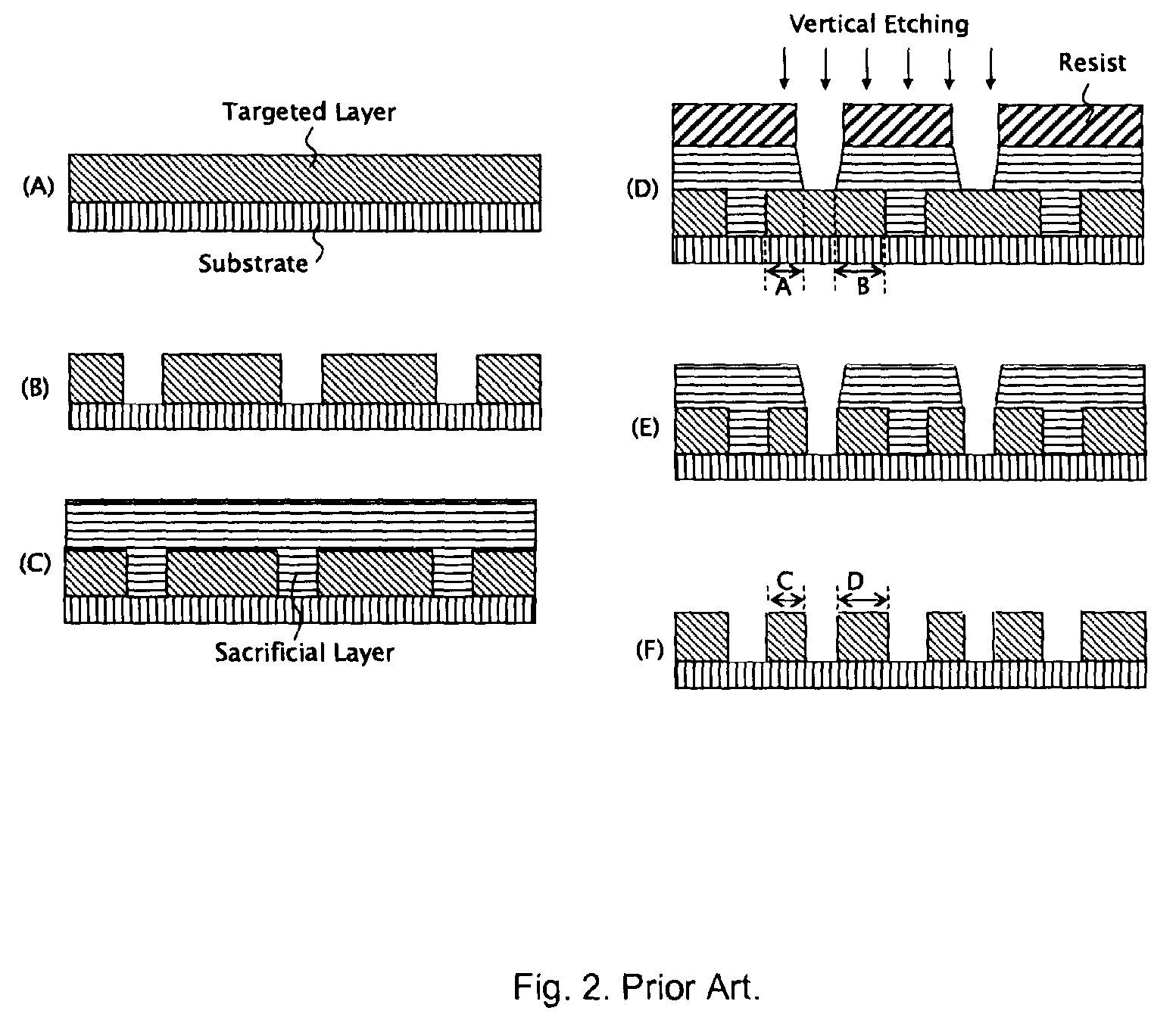Post-lithography misalignment correction with shadow effect for multiple patterning
a post-lithography and patterning technology, applied in the direction of basic electric elements, semiconductor/solid-state device manufacturing, electric devices, etc., can solve the problems of long development time for high-throughput manufacturing applications, severe challenge to significantly reduce the misalignment budget in the lithographic process, and serious challenges to process yield and circuit design/layou
- Summary
- Abstract
- Description
- Claims
- Application Information
AI Technical Summary
Problems solved by technology
Method used
Image
Examples
Embodiment Construction
[0018]If the misalignment can be measured right after the exposed resist is developed and baked, then the correction process is shown in FIG. 5. The tilting angle can be arbitrary (2-D) and should be adjusted according to measured values of misalignment in both X and Y directions; but here we only use the right-tilted etching as an example to demonstrate the concept. First, we put a hard mask on top of the substrate and pattern this hard-mask layer with semi-dense features wherein the size of lines is three times of the size of spaces as shown in FIG. 5(A) and FIG. 5(B). In step 5(C), resist is spun on the patterned hard-mask layer and exposed again to print another pattern of semi-dense features with its position shifted. Ideally, we would like to shift the second pattern in such a way that the trenches in the resist will be located right at the center of the corresponding line structures underneath. However, due to misalignment in a lithographic process, perfect overlay can not be...
PUM
 Login to View More
Login to View More Abstract
Description
Claims
Application Information
 Login to View More
Login to View More - R&D
- Intellectual Property
- Life Sciences
- Materials
- Tech Scout
- Unparalleled Data Quality
- Higher Quality Content
- 60% Fewer Hallucinations
Browse by: Latest US Patents, China's latest patents, Technical Efficacy Thesaurus, Application Domain, Technology Topic, Popular Technical Reports.
© 2025 PatSnap. All rights reserved.Legal|Privacy policy|Modern Slavery Act Transparency Statement|Sitemap|About US| Contact US: help@patsnap.com



